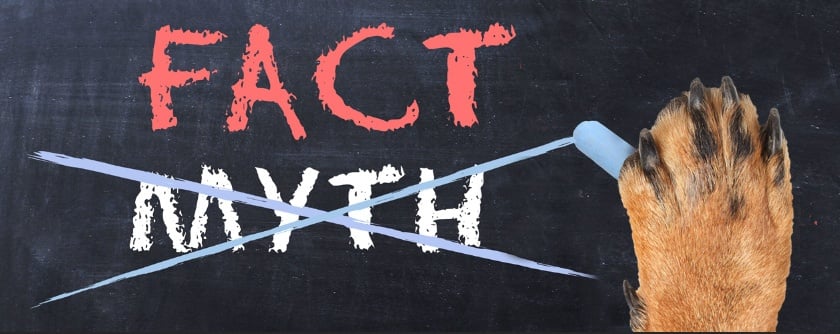
Virox Animal Health Blog
Disinfection Tales for Your Tails
Latest Stories
Featured Stories
Chewing gum takes 7 years to digest. Bats are blind. Goldfish have a 3-second memory.
What do these all have in common? They are all myths! There are so many myths in the world that it’s hard to know which ones have any truth to them. Every topic seems to have myths lingering around them, meaning the topic of disinfection is not immune either. Let’s debunk some disinfection myths!

"Cleaning and Disinfection Are the Same Thing"
NOT TRUE! Cleaning uses detergents and surfactants to break up soils (visible or not) on surfaces. Disinfectants kill or inactivate microorganisms and pathogens in various ways, depending upon the disinfectant used. Some penetrate the outer layer of a pathogen’s cells, which weakens it. Others sort of blow the cell apart, almost like a bomb.

"All Disinfectants are Created Equal and Can Be Used in the Same Way"
NOT EVEN CLOSE! In the United States and Canada, you’ll find more than 8,000 registered disinfectant products for sale, and there are several variations between them. Among the six most common chemistries used for disinfection, especially in medical settings, you’ll find vast differences in spectrum of efficacy, concentrations, contact times, label language, and personal protection needed for proper usage. In addition, many disinfectants require you to clean a surface first with a product containing detergents before you can use your chosen disinfectant.

"Cleaning and Disinfection is NOT My Job"
WRONG-O! In any medical setting, infection control strategies must be part of everyone’s job even if they don’t do the cleaning itself. Everyone is encouraged to frequently practice hand hygiene, especially after contact with a patient or items in their environment. It’s an important part of maintaining a safe and functional veterinary facility.

"If a Disinfectant Kills Most Germs, it MUST be Toxic"
NOT ANYMORE! Historically, this was true. In the past 10-15 years, however, companies have been working to bring safer and more environmentally sustainable disinfectants to market. If you’re using an older type of disinfectant product, be sure to provide training on protocols for safe use. Safety Data Sheets (SDS) are your best resource to learn about the toxicity and risks associated with using the product. See Section 2 and Section 11 on the SDS for details. Some products do indeed contain chemicals that are known carcinogens, known respiratory irritants (causing occupational asthma or chemical pneumonia), known skin sensitizers, known to release volatile organic compounds (leading to poor air quality), or known to contain nonylphenol ethoxylates (hormone-mimicking agents that can act as endocrine disruptors in the body).

"Disinfectants Kill on Contact"
NEVER! All disinfectants have a contact time that must be followed. The contact time is the amount of the time the surface must remain wet for disinfection to be achieved. Contact times can range anywhere from 30 seconds to 10 minutes, which means you always have to read the product label before using the disinfectant.
Now that we have debunked some common disinfection myths – spread the word! Because you all know what they say, knowledge is power.
Paw you later!
Kim

